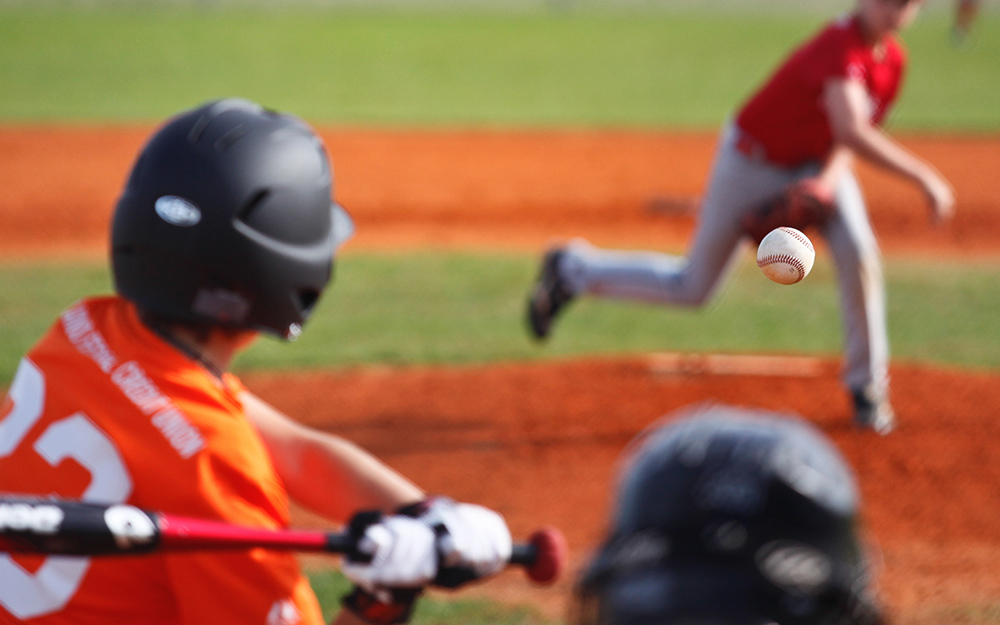How to Help Young Athletes Prevent Sports Injuries
Date
May 18, 2022

Date
May 18, 2022
Credits
Medical providers featured in this article

In Brief
{{cta-block}}
For young athletes, a new sports season can be cause for both celebration and caution, says Dr. Carlos Uquillas, a sports medicine specialist.
"Kids and teens are super excited to take advantage of the outdoors and playing sports after school," he says. "But it's important to be aware of the strain they're putting on their young bodies and the potential for overuse."
{{providers}}
"I always advise my young patients not to specialize in a sport too early. Club sports and other year-round activities mean they're constantly straining the same muscles."
Preventing sports injuries in kids before they occur
While professional athletes incorporate injury prevention as a regular part of their daily routines, young athletes are more likely to seek help from a doctor after an injury has occurred.
Dr. Uquillas wants parents to know there are proactive steps young children and teens can take to limit the likelihood of getting hurt in the first place.
"At the Cedars-Sinai Kerlan-Jobe Institute, we've developed a number of injury prevention programs, including for the shoulder, elbow and knee," he says. "Parents also can turn to prevention resources like the Thrower's Ten, a set of movements designed to improve strength, power and endurance of the shoulder and arm muscles."
Three main types of sports injuries in youth athletes
Dr. Uquillas says there are three main types of sports injuries he sees in young athletes:
1. Knee injuries
Overuse of the knee is common in all sports, Dr. Uquillas says. In young people, it can lead to conditions like Osgood-Schlatter disease, which is caused by painful irritation and swelling of the bone growth plate. The pain typically worsens with running, jumping and other activity.
Patellar tendonitis, or "jumper's knee," is another frequent complaint for young athletes. It is characterized by inflammation of the patellar tendon, which connects the kneecap to the shin bone.
Acute twisting injuries, such as tears of the anterior cruciate ligament and the meniscus, are also frequent occurrences for kids and teens who play sports.
2. Shoulder injuries
Pitchers and other overhead-throwing athletes are at risk of developing "Little League shoulder," an overuse injury caused by stress to the arm bone nearest to the shoulder. The stress results in widening of the growth plate and most commonly occurs in children and teens between the ages of 11 and 16.
"Pitching is a repetitive motion that puts a lot of wear and tear on a shoulder," Dr. Uquillas says. "Our bodies need a break so they have time to recover from that wear and tear—otherwise, the cycle of healing is interrupted, potentially leading to larger injuries down the road."
3. Elbow injuries
Dr. Uquillas says that repeated stress from overhead movement can also lead to elbow damage due to tears in the ulnar collateral ligament. Pain on the inner side of the elbow is the most common symptom. It can sometimes feel like a "pop" after throwing, followed by intense discomfort.
Avoiding muscle strain and overuse
In addition to strength training, young athletes also need to emphasize good nutrition, hydration and taking time to rest each muscle group.
"I always advise my young patients not to specialize in a sport too early," Dr. Uquillas says. "Club sports and other year-round activities mean they're constantly straining the same muscles."
"If you stay a multisport athlete, you're working on different muscle groups throughout the year. In the long run, this will help you build the mechanics for the sport you actually want to pursue."
Focus on the long game
From Dr. Uquillas' viewpoint, the most successful young athletes are those who focus on the long game.
"It's important to have talent—to participate in your sport and to make it to the next level—but it's just as important to prioritize longevity and health," he says. "It doesn't matter how good you are if you can't stay healthy. Learning how to take care of your body is as vital as learning the skill of your particular sport."
When young athletes get upset about having to dial back the intensity of their activity, Dr. Uquillas tries to give them some perspective.
"I tell them to look at it this way: If they're injured, they're not going to play anymore anyway," he says. "The longer they give their bodies to develop, the better off they're going to be."





